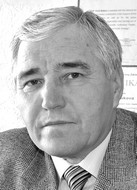Potential benefits of gas mixtures to speed up rehabilitation in elite cycling sport
Фотографии:
ˑ:
Dr.Biol., Professor Y.A. Bukov1
PhD, Associate Professor L.M. Bukova1
PhD, Associate Professor V.I. Malygina1
V.M. Khodorchenko1
P.S. Safronova1
1V.I. Vernadsky Crimean Federal University, Simferopol
In view of particular importance of rehabilitation measures being carried out in conditions of intensification of training and competitive processes, it is extremely important to find the most effective means of rehabilitation, including using various gas mixtures which components can have a targeted effect on various mechanisms underlying the rehabilitation processes.
Objective of the study was to rate benefits of different gas mixtures applied for rehabilitation in elite cycling sport after acute physical fatigue. 14 elite cyclists sampled for the study were tested once a week by a new gas mixture each time. The study data were processed by the variation statistic tools using the Student t-criterion. A special priority in the study was given to the physical working capacity building mechanisms. Breathing with gas mixtures was found to facilitate the homeostatic controls of the oxygen consumption regimen, with the control process varying with variations in the gas mixture. Findings of the study are recommended for application in rehabilitation system design.
Keywords: gas mixtures, acute fatigue, rehabilitation, cyclists.
References
- Averyasova J.O., Aksenov M.O., Andryushchenko L.B. Poisk genov vliyayuschikh na effektivnost sorevnovatelnoy deyatelnosti basketbolistov [Search for genes of influence on competitive efficiency of basketballers]. Mater. II Vseros. nauch.-prakt. konf. po voprosam sportivnoy nauki v detsko-yunosheskom i adaptivnom sporte [Proc. II nat. res.-pract. conf. on the issues of sports science in children and youth and adaptive sports], 11- 13 December 2017, P. 12.
- Bukov Y.A.. Diagnosticheskie vozmozhnosti izmenennoy gazovoy sredy v otsenke funktsionalnogo sostoyaniya sportsmenov [Diagnostic possibilities of changed gas environment in assessment of athletes’ functional state]. Materialy Nauchnogo simpoziuma ‘Problemy funktsionalnykh sostoyaniy i adaptatsii v sporte’ [Proc. Scie. Symposium ‘Problems of functional states and adaptation in sports’]. St. Petersburg: NGU im. P. F. Lesgafta, 2017, pp. 30–32.
- Volkov N.I. Intervalnaya trenirovka v sporte [Interval training in sports]. Moscow: Fizkultura i sport publ., 2000, 162 p.
- Govorukha N.N., Nazarenko A.I. Vliyanie zameny vozdukha geliem i argonom na intensivnost tkanevogo dykhaniya [Effect of replacement of air with helium and argon on intensity of internal respiration]. Fiziologicheskiy zhurnal, 1987, vol. 33, no. 3, pp. 58–62.
- Kolchinskaya A.Z., Tsyganova T.N., Ostapenko L.A. Normobaricheskaya intervalnaya gipoksicheskaya trenirovka v meditsine i sporte [Normobaric interval hypoxic training in medicine and sports]. Moscow: Meditsina publ., 2003, 408 p.
- Levshin I.V., Polikarpochkin A.N. Perspektivy primeneniya kislorod-gelivykh smesey v sporte vysshikh distizheniy [Perspectives of application of oxygen-helium mixtures in elite sports]. Uchenye zapiski un-ta im. P. F. Lesgafta, 2010, no. 4 (62), pp. 18–21.
- Nikanorov V., Domashevich E., Zhuk O. Ingalyatsii kislorono-gelievoy smesi [Inhalations of oxygen-helium mixture]. Nauka i innovatsii, 2012, no. 10 (116), pp. 19–23.




 Журнал "THEORY AND PRACTICE
Журнал "THEORY AND PRACTICE